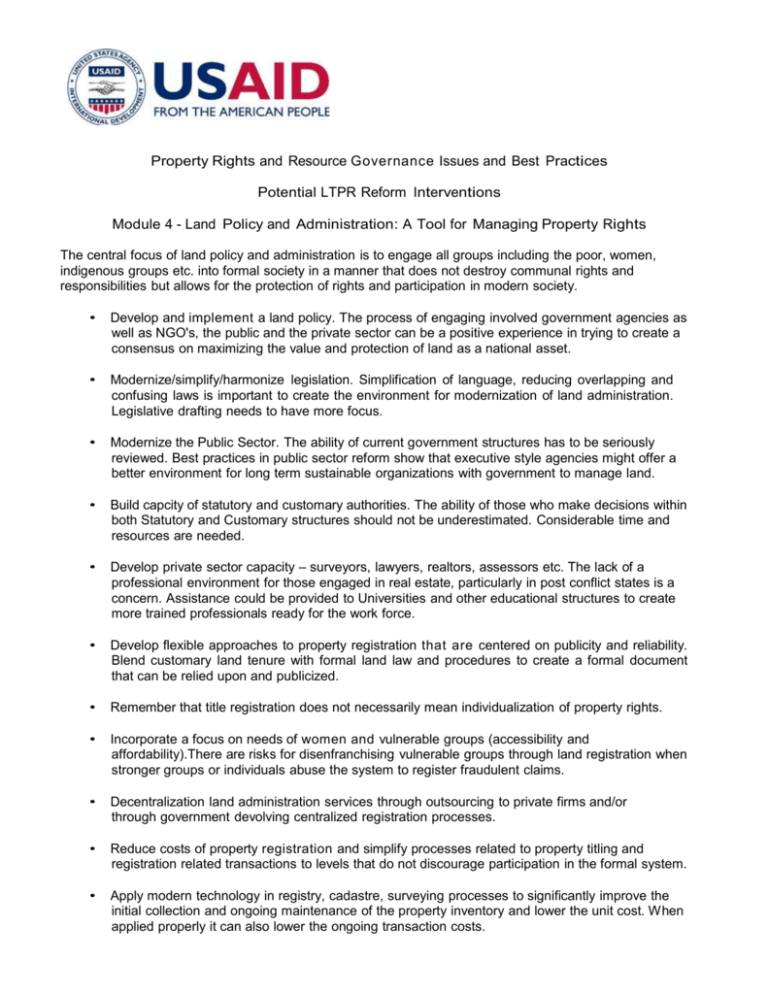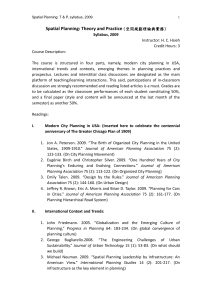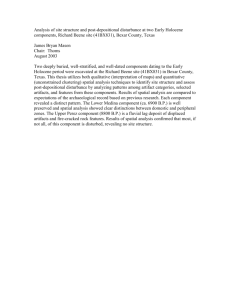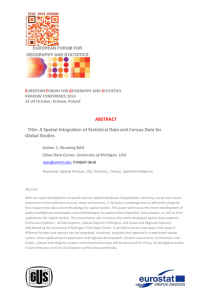Module 4: Potential Programmatic Interventions Land Administration
advertisement

Property Rights and Resource Governance Issues and Best Practices Potential LTPR Reform Interventions Module 4 - Land Policy and Administration: A Tool for Managing Property Rights The central focus of land policy and administration is to engage all groups including the poor, women, indigenous groups etc. into formal society in a manner that does not destroy communal rights and responsibilities but allows for the protection of rights and participation in modern society. • Develop and implement a land policy. The process of engaging involved government agencies as well as NGO's, the public and the private sector can be a positive experience in trying to create a consensus on maximizing the value and protection of land as a national asset. • Modernize/simplify/harmonize legislation. Simplification of language, reducing overlapping and confusing laws is important to create the environment for modernization of land administration. Legislative drafting needs to have more focus. • Modernize the Public Sector. The ability of current government structures has to be seriously reviewed. Best practices in public sector reform show that executive style agencies might offer a better environment for long term sustainable organizations with government to manage land. • Build capcity of statutory and customary authorities. The ability of those who make decisions within both Statutory and Customary structures should not be underestimated. Considerable time and resources are needed. • Develop private sector capacity – surveyors, lawyers, realtors, assessors etc. The lack of a professional environment for those engaged in real estate, particularly in post conflict states is a concern. Assistance could be provided to Universities and other educational structures to create more trained professionals ready for the work force. • Develop flexible approaches to property registration that are centered on publicity and reliability. Blend customary land tenure with formal land law and procedures to create a formal document that can be relied upon and publicized. • Remember that title registration does not necessarily mean individualization of property rights. • Incorporate a focus on needs of women and vulnerable groups (accessibility and affordability).There are risks for disenfranchising vulnerable groups through land registration when stronger groups or individuals abuse the system to register fraudulent claims. • Decentralization land administration services through outsourcing to private firms and/or through government devolving centralized registration processes. • Reduce costs of property registration and simplify processes related to property titling and registration related transactions to levels that do not discourage participation in the formal system. • Apply modern technology in registry, cadastre, surveying processes to significantly improve the initial collection and ongoing maintenance of the property inventory and lower the unit cost. When applied properly it can also lower the ongoing transaction costs. • Modernize systems for registry and cadastre to allow government to efficiently store and maintain electronic data and provide improved public and private sector access (getting to the records). • Improve public outreach & education – including starting education at primary school. • Provide legal aid on land issues, particularly to disadvantaged groups such as the poor, women, indigenous groups etc. Identify NGO’s and others who already provide services to these groups who would be interested in adding this as a service at marginal additional cost • Provide financial literacy training for those who do gain documented/formalized rights. Experience has shown that these groups are often preyed upon by “loan sharks” and others • Integrate the issuance of documentation of property rights into other programmatic actions such as, community forestry, agri-business, water supply projects, housing finance, and health projects. • Develop comprehensive standards for the collection of spatial data since this is not only a key element to the documentation of property rights but also to many other development needs such as health, education, service delivery, public safety and many others • Collect once – use many times. The cost of data collection is largely incurred through primary data collection. Care should be taken to minimize the field collection efforts and to tie in with others who have similar data needs. • Use various modes of spatial data tools and gathering approaches. This can include GPS, cell phones, cameras, satellite imagery, aerial photographs, existing paper maps, field interviews, sketches etc. • Blend scales and accuracies if necessary in data poor environments. As long as the source and estimated accuracy is collected and entered as information about the spatial data and process used to create it (metadata) then this process should be encouraged. • Maintain spatial data. Maintenance of spatial data requires good governance and is key in order to maintain its commercial value • Look to partnerships with private sector to defray the initial cost of developing the primary spatial data layers. For example, working local cell phone companies, cable TV providers, utilities and others that gather and require "granular" level spatial data.











